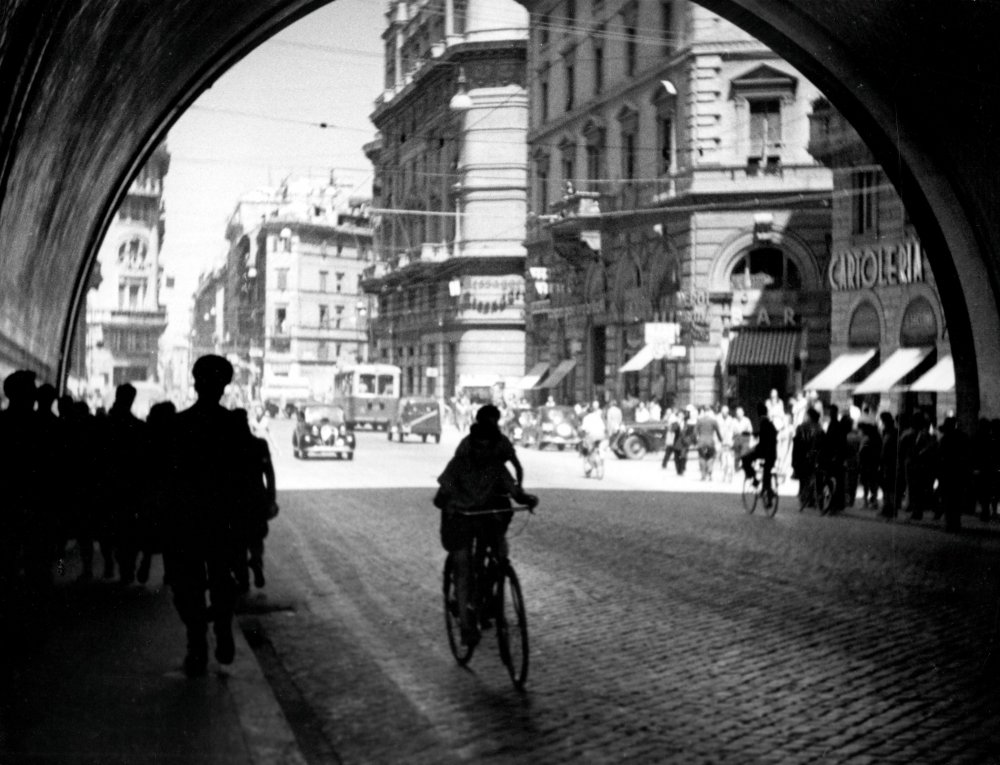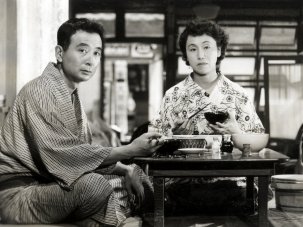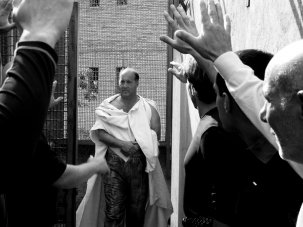from our May 2013 issue

Bicycle Thieves (1948)
One glance at the bookshelf of volumes dedicated to Italian neorealism might lead us to assume that there is very little left to say about what Martin Scorsese has called “the most precious moment in film history”.

The Sight & Sound Deep Focus season The Roots of Neorealism runs at BFI Southbank 1 May-6 June 2013.
Pasquale Iannone chairs a panel discussion with Alexander Jacoby, Henry K Miller, Ginette Vincendeau and Chris Wagstaff on 7 May.
The proponents of this politically committed reaction to the glossy, studio-bound, Hollywood-influenced productions approved by Mussolini’s regime were determined to take their cameras to the streets, to neglected communities and their surroundings, to show the ‘real Italy’ in all its diversity. Here was a new kind of cinema, one that returned to its roots, a people’s cinema that chronicled the struggle against Nazism but also highlighted the hardship and upheaval of the post-war period.
Of recent studies of the trend, Christopher Wagstaff’s Italian Neorealist Cinema: An Aesthetic Approach (2007) stands out, but there are two main areas that remain comparatively unexplored. First, much of the writing on neorealism (not only that in English) has tended to work with a restricted filmography of a dozen or so titles, focusing almost exclusively on the canonical trio of Rossellini, De Sica and Visconti.
Second, even after seven decades of debates on the subject, in-depth studies of the trend’s origins are surprisingly few. We know more about neorealism’s own legacy than we do about some of the films that helped shape it in the first place.
If it can be said that neorealism’s political agenda and worldview were very much products of a specific time and place, the same certainly cannot be said of what are usually deemed to be its formal innovations. In aesthetic terms virtually nothing in neorealist cinema was new, from de-dramatised narratives to scrupulous use of real locations to the casting of non-professionals.
Federico Fellini, in a revealing interview from 1961, reinforces the importance of aesthetics, arguing that:
“Neorealism is not about what you show, but how you show it. It’s simply a way of looking at the world without preconceptions or prejudices. Some people are still convinced that neorealism should only be used to show a particular type of reality – social reality to be exact. But then it becomes propaganda.”
Admittedly Fellini was in defensive mode here, responding to critics who had accused him of betraying neorealism, but his remarks are more than valid. If we are to foreground style and tone, then there are a great many works that were neorealist avant la lettre, both in Italy and abroad.
Without trying to compile a definitive list, I’d like to explore 12 titles which, in various ways, can be said to have inspired, influenced and/or anticipated neorealism. Some of the films are acknowledged influences, such as Jean Renoir’s Toni or Alessandro Blasetti’s 1860, whereas others – Vsevolod Pudovkin’s The End of St Petersburg and Ozu Yasujirô’s An Inn in Tokyo, for instance – might seem more left-field choices. I also wanted to make room for works that appeared at the same time as neorealism and are very much in the same vein but are nowhere near as well known as they should be (Manoel de Oliveira’s Aniki Bóbó and Jean Grémillon’s Le ciel est à vous).
The first neorealist picture may have been made more than 70 years ago, but the trend still fascinates critics, scholars and filmmakers alike. Italian directors are still grappling with it, from veterans such as the Taviani brothers (Caesar Must Die, 2012) to those of the younger generation such as Matteo Garrone (Gomorrah, 2008; Reality, 2012). Later in 2013 one of the last surviving neorealists, 91-year-old Carlo Lizzani (Achtung Bandit!, 1951, The Verona Trial, 1962) will release a documentary entitled We Weren’t Only Bicycle Thieves, which will include contributions from Bernardo Bertolucci, Paolo and Vittorio Taviani, Martin Scorsese, Steven Spielberg, Ridley Scott and Ron Howard, among others.
Listing these famous names together makes you realise just how far neorealism’s branches have spread. But what of its roots?
1. The End of St Petersburg
(Konets Sankt-Peterburga) Vsevolod Pudovkin, 1927
One of the famous theoretical debates of the 1940s set up a clear dichotomy between (Soviet) montage cinema and filmic realism. Coming down firmly on the side of realism, French critic and theorist André Bazin argued that montage cinema was didactic and manipulated the viewer into a particular point of view. On the other hand, realism and its stylistic devices such as deep focus and long takes helped the filmmaker maintain “an aesthetic of reality” without “imprisoning the viewer” – which Bazin argued was the case in montage cinema.
Bazin’s views have been argued over by generations of subsequent theorists, but it’s interesting to note how the neorealists of the 1940s often had nothing but admiration for montage filmmakers such as Sergei Eisenstein, Dziga Vertov, Alexander Dovzhenko and Pudovkin. One of the earliest Italian filmmakers to actually display the influence of Soviet cinema was Alessandro Blasetti, but later films such as Visconti’s La terra trema (1948) also drew unmistakably from the montage school.
Like Eisenstein’s October (1928), Pudovkin’s The End of St Petersburg was commissioned to mark the tenth anniversary of the October Revolution. It spans three years – from 1914 and the outbreak of World War I to the tumultuous events of 1917. As Vance Kepley Jr has noted in his 2003 monograph named for the film:
“The End of St Petersburg explores the conditions that make seemingly powerless, unremarkable individuals into agents of historical change… Pudovkin sets forth a view of revolution that stresses personal empowerment.”
This foregrounding of the human aspect, this history-from-below perspective seemed full of expressive potential in the context of Italian post-war film. We can even see it in proto-neorealist works such as Blasetti’s 1860. Pudovkin may be deemed somewhat less radical in his montage experimentation than Eisenstein, but his greater focus on the interaction of society and the individual marks him out as a key forerunner of neorealism.
2. People on Sunday
(Menschen am Sonntag) Robert Siodmak & Edgar G. Ulmer, 1929
Shot from July to September 1929, People on Sunday is very much a liminal work. It has often proved difficult for critics and historians to categorise the film, hovering as it does between popular and art cinema. The film presents problems for the auteurist critic too, given that it is the work of a collective. But what a collective: Robert and Kurt (later Curt) Siodmak, Edgar G. Ulmer, Billy Wilder, Fred Zinnemann and Eugen Schüfftan all contributed to one of the great city films, a vibrant, sun-kissed snapshot of late-Weimar Germany.
After a quarrel with his wife, a taxi driver spends a lazy Sunday with a friend and two girls by the Berlin lakes. The four characters lap up the sun, take a swim, listen to music, have a picnic, ride a pedal boat and generally do all they can to enjoy a day away from the responsibilities of work.
People on Sunday unfurls like a bridge between the avant-garde city film of the early 1920s and the neorealist cinema of the 1940s. It exudes a greater sense of human warmth than works such as Walther Ruttmann’s Berlin: Symphony of a Great City (1927) or Alberto Cavalcanti’s Nothing But Time (1926), but equally it makes a clear choice not to depict the conflict and hardships of life in the modern metropolis. Monday will come around soon enough, it seems to say; best to grab these last few precious moments of freedom.
Nearly all of the young filmmakers involved with the production of People on Sunday left for Hollywood in the 1930s, where discussions over who contributed what depended on which of them you happened to be talking to.
The film’s influence on post-war Italian cinema is undeniable – most pronounced, perhaps, in a lesser-known 1950 picture from Luciano Emmer called A Sunday in August. Emmer’s film, which featured Franco Interlenghi from De Sica’s Shoeshine (Sciuscià, 1946) as well as an early performance from Marcello Mastroianni, was considered the first example of neorealismo rosa (‘pink neorealism’). This trend saw filmmakers continue to use many of the formal devices of neorealism while discarding its political agenda and drawing on popular genres such as comedy and melodrama. In reality, this had already begun with films like De Santis’s Bitter Rice (see below) and, some might argue, goes as far back in the timeline of neorealism as Visconti’s Ossessione (also below).
3. Man of Aran
Robert Flaherty, 1934
“With Flaherty,” wrote the pioneering John Grierson in his 1930s essay ‘First Principles of Documentary’, “it became an absolute principle that the story must be taken from the location… His drama, therefore, is a drama of days and nights, of the round of the year’s seasons, of the fundamental fights that give his people sustenance.”
Grierson could just as easily have been talking about Visconti’s second neorealist film La terra trema – a film clearly influenced by Flaherty, and in particular the Michigan-born filmmaker’s Man of Aran. Driven by a desire to use film to discover and reveal little known people and places, Flaherty’s first film Nanook of the North (1922) remains one of the best-known documentaries of the silent era, and while the director would travel the world in subsequent decades, his preoccupations remained those of his debut: the dangers of nature and the struggle of communities for survival.
In 1934, with a limited budget provided by producer Michael Balcon, Flaherty shifted his focus to the islanders of Aran, off the west coast of Ireland, to make the film that, more than any of his others, would be criticised for its supposed ‘distortion’. Man of Aran was deemed to be more about Flaherty’s vision of life than life as it was, but of course his films were always highly personal and his work – perhaps more than that of any of the documentary pioneers – has much to say about the subjective nature of the form.
Man of Aran featured a soundscape created entirely in post-production; this was partly down to logistics, but the final result imbued the images with a lyrical, poetic quality. In aesthetic terms, it was far ahead of the vast bulk of fiction films of the time. More than a decade after Man of Aran, Visconti would find himself having to answer the same kind of criticisms as Flaherty for his portrayal of a Sicilian fishing community in La terra trema.
4. Toni
Jean Renoir, 1935
Any discussion of the roots of neorealism cannot fail to take in the 1930s films of Jean Renoir. Coming roughly mid-point in a remarkable run of features that included La Chienne (1931), Boudu Saved from Drowning (1932), La Grande Illusion (1937) and La Règle du jeu (1939), Renoir’s Toni is often regarded as the major precursor of neorealist cinema.
Shot in the summer of 1934, the film – like Visconti’s Ossessione (below) – is built around a crime passionel. Italian immigrant labourer Toni (Charles Blavette) arrives in the French town of Martigues on the Mediterranean coast and moves in with his landlady Marie (Jenny Hélia). Before long, however, he falls for the vivacious Josefa (Celia Montalvan), a Spanish girl whose marriage to a boorish foreman does little to dim Toni’s passion.
What’s most striking about Toni is less Renoir’s basic plot but his treatment of it – his attitude towards the material. Reflecting later in life on the film’s influence on neorealism, the director himself shrugged off any direct link. “The Italian films are magnificent dramatic productions,” he wrote in his memoirs My Life and My Films, published in 1974, “whereas in Toni I was at pains to avoid the dramatic… My aim was to give the impression that I was carrying a camera and microphone in my pocket and recording whatever came my way, regardless of its comparative importance.”
Even in the context of 1930s French cinema, Renoir’s film is startling in its sensuous immediacy. The Italian author and journalist Italo Calvino once wrote that the French films he devoured as a youngster in the 1930s seemed dense with natural odours, whereas Hollywood pictures “smelled of Palmolive, lustrous and antiseptic”.
Few other films of the time capture this better than Toni. The director’s languid pans unobtrusively link characters to their (new) surroundings, while his innovative use of live sound makes a virtue of what was at the time still primitive cinematic technology. These two elements come together in many of the film’s most memorable passages, such as the scene in which immigrant workers perform folk songs, their melancholy notes hanging in the balmy air.
5. 1860
Alessandro Blasetti, 1933
In his inventive approach to both film form and content, Alessandro Blasetti was the key Italian filmmaker of the Fascist era. Not only was he a pioneer in his experiments with sound and colour, but he also dared to explore the limits of what could be depicted in mainstream film. This partly explains why, unlike many of his contemporaries, his reputation endured in the post-war period, even among the fervently anti-fascist.
Blasetti’s started out as a critic in the early 1920s when he founded Cinematografo, the first Italian film magazine dedicated to technical and material aspects of filmmaking. He made his feature debut with Sole (1929), a celebration of rural regeneration which Mussolini himself described as marking the dawn of Fascist cinema. It is interesting to note that, while Blasetti’s work found favour with the Fascist regime, his main formal influences post-Sole came from the Soviets. He particularly admired Nikolai Ekk, who made the first Soviet sound picture The Road to Life – a major success at the inaugural Venice Film Festival in 1932 – and continued to be an influence on Blasetti, especially on his breakthrough film 1860.
A patriotic, realist ‘history-from-below’ chronicle of the unification of Italy, 1860 was described by historian Pierre Sorlin as “the most optimistic screen portrayal of the Risorgimento”. It chronicles the popular protests that unfolded in Sicily both during and after Garibaldi’s expedition to the island.
Giuseppe Gulino (a non-professional) plays Carmineddu, a peasant who is dispatched by palermitano priest Padre Costanzo (Gianfranco Giacchetti) to meet Garibaldi in Genoa and inform him of the Sicilian uprisings. On his journey he meets a variety of characters, each of differing political persuasions. After arriving in Genoa, he eventually joins Garibaldi’s Expedition of the Thousand as it makes its way south; the film ends with the Battle of Calatafimi in the north-west of Sicily.
While 1860 is certainly an important Italian precursor to neorealism in its use of landscape and non-professional actors, the film’s also notable for Blasetti’s sophisticated use of sound, with the influence of Ekk especially coming to the fore. During Carmineddu’s long, solitary journey by sea to the mainland port of Civitavecchia, the director evokes his protagonist’s exhaustion under the blazing sun by superimposing shots of the sea and images of the port. These shots are accompanied by the clanging of tools and the voices of dock workers.
We then cut to an interior where Carmineddu is questioned by local officials but is unable to understand a word (the town was then under French control). The camera moves towards a portrait of Napoleon III with French voices continuing on the soundtrack. Blasetti then match-cuts to a portrait of Maria-Sophia of Bavaria and the French voices become German. We are now back in Sicily where Carmineddu’s wife Gesuzza (Aida Bellia) has been captured by Swiss soldiers hired by the Bourbons. In this brief passage, Blasetti highlights both subjective, individual experience and the divided state of pre-unification Italy to quite brilliant effect.
6. An Inn in Tokyo
(Tôkyô no yado’) Ozu Yasujiro, 1935
Like many other countries, the sound film in Japan did not reach popular acceptance until well into the 1930s, with many directors initially hesitant to embrace the new technology. Only after the success of foreign talkies did companies such as Nikkatsu or Shochiku move decisively toward sound.
Ozu would hold out until 1936’s The Only Son, making more than 20 silents in just over five years, including Passing Fancy (1933) and A Story of Floating Weeds (1934). Both of the latter films feature Sakamoto Takeshi as Kihachi, a character who would return in An Inn in Tokyo, Ozu’s final (surviving) silent picture.
The film tells of the plight of an unemployed father searching for work in and around Depression-hit Tokyo, his two young sons by his side. Thematically, there are many links to be made with De Sica’s Bicycle Thieves (below) but, as David Bordwell has rightly noted, “An Inn in Tokyo brings style into prominence through repetitive patterning and parametric variation.” Rather than walking the bustling ancient streets of Rome, Kihachi and his boys roam a flat, industrial desert littered with giant spindles, gasometers and telegraph poles. Ozu returns again and again to shots of the three characters dwarfed by these looming signifiers of modernity.
In keeping with several of the director’s films of the 1930s, An Inn in Tokyo celebrates the vibrance and resourcefulness of children. While their father often appears (understandably) despondent, his two boys are playful and vibrant. It is no coincidence that the film’s most heart-rending moments occur precisely when this enthusiasm is sapped.
Throughout the film, the characters’ few moments of happiness are unfailingly punctured by the harsh reality of their situation. When Kihachi reveals that he only has enough money for food or a room for the night, the sons choose food. Ozu cuts to father and sons hungrily eating rice at a local inn. The two boys – worried that their food will be taken away before they get the chance to finish – literally hug their bowls as they eat. The scene anticipates a similarly poignant passage in Bicycle Thieves when father and son stop off at a trattoria for a meal they can barely afford.
Many familiar Ozu themes (and formal devices) can be found in this neglected masterpiece of 1930s cinema, with the director’s depiction of the parent-child relationship wrapped, as ever, in an air of melancholy. An Inn in Tokyo is more than deserving of rediscovery, not merely as a precursor to Italian neorealism but as one of Ozu’s most beautifully realised works tout court.
7. Aniki Bóbó
Manoel de Oliveira, 1942
We seem to be running out of ways to describe the incredible longevity of Portuguese director Manoel de Oliveira. At the time of writing the 103-year-old is working on his latest film The Devil’s Church, after his previous work Gebo and the Shadow premiered at last year’s Venice Film Festival.
To put his miraculous achievements in context, we should remember that Oliveira was born in 1908, the same year as David Lean, Bette Davis, James Stewart and Anna Magnani, and that he made his feature debut more than 70 years ago, as his native Portugal was entering the second decade of Salazar’s repressive regime.
As with cinema in Mussolini’s Italy, the vast majority of Portuguese films of the time were conformist. Made in 1942, Oliveira’s Aniki Bóbó was intended as a symbolic attack on his country’s dictatorship. The film was based on Rodrigues de Freitas’s short story ‘Little Millionaires’, first published in the pages of leading modernist journal Presença in the 1930s.
It tells of the rivalry between two boys, Carlitos and Eduardinho, and their attempts to win over the same girl, Teresinha. Charismatic but also a bully, Eduardinho is the leader of a group of children who play on the banks of the Douro. His love-rival Carlitos seems to be his polar opposite. Shy and naive, he nonetheless lands what he thinks is a major coup when he steals a doll Teresinha has admired in a local shop; but this by no means signals the end of the competition between the boys.
In its unvarnished depiction of the lives of children – their playfulness but also their lies, deceit and cruelty – Aniki Bóbó anticipates both De Sica’s Shoeshine (1946) and Luis Buñuel’s Los olvidados (1950), even though its urban landscape is perhaps closer to An Inn in Tokyo (above).
Oliveira, like Ozu, chooses not to recreate the bustle of city life. The depopulated streets of Porto allow the director to make the contrast between the restriction inside and the freedom outside the classroom.
Adult authority, in the form of parents and schoolteachers, is viewed with great suspicion by Oliveira. Few adults are given names and we don’t even see the face of Carlitos’s mother, who appears in a handful of scenes, including a moment towards the end of the film when she wakes the boy from a nightmare presented by Oliveira in all its contorted, quasi-expressionist hysteria.
The main criticism levelled at Aniki Bóbó at the time of its release seems now to be the film’s overriding strength: its depiction of childhood not as an idyll but as a world that can be just as tumultuous and unforgiving as adulthood.
8. Ossessione
Luchino Visconti, 1942
While Rossellini and De Sica were concerned explicitly with chronicling the hardships of wartime and the post-war era, Visconti’s Ossessione – for many the very first neorealist film – drew on typically American genres (in particular the American noir and western) as well as Italian cronaca nera. Together with a group of young anti-fascist critics (Mario Alicata, Gianni Puccini, Giuseppe De Santis), the well-travelled aristocrat transposed James M. Cain’s 1934 novel The Postman Always Rings Twice to the sweltering flatlands of the Po delta.
Visconti had spent several years in France in the 1930s, where mutual friend Gabrielle ‘Coco’ Chanel had introduced him to Jean Renoir. Informally, Visconti joined Renoir’s troupe as they moved from film to film, culminating in the unfinished short Une partie de campagne (1936).
A short time later, Renoir was invited to Italy to lecture at the Centro Sperimentale di Cinematografia, but the outbreak of World War II forced him to abandon Europe for the US. He left behind a treatment he had written of Cain’s novel and this was the basis of what later became Ossessione.
In the film, wandering hobo Gino arrives at a roadside trattoria owned by the harmlessly garrulous Bragana (Juan De Landa). Having set his sights on Bragana’s downtrodden wife Giovanna, Gino offers his services as a mechanic in exchange for room and board. Gino and Giovanna soon become lovers and hatch a plan to murder Bragana but, in typically noir fashion, things do not go to plan.
As with Rossellini’s Rome Open City (below), Visconti cast two well-known Italian stars in the film’s main roles. Massimo Girotti had made his international breakthrough as a 21-year-old in Alessandro Blasetti’s historical epic The Iron Crown (1939), and went on to star in Rossellini’s A Pilot Returns (1942). For the role of Giovanna, the director was so determined to cast Anna Magnani that even when the actress told him she was pregnant, he wasn’t deterred.
However, production of the film was delayed, meaning that Magnani had to eventually abandon the project. The role went to Clara Calamai, a prominent Italian star of the so-called ‘white telephone’ films of the 1930s and early 40s. Under Visconti’s remorseless direction, she was completely transformed from glamorous diva to slouched, worn-out adulteress.
From opening scene to pitch-black finale, Ossessione presents a sweat-drenched, earthy alternative to the polish of fascist-approved cinema. Most satisfyingly for the film’s makers, when Ossessione was first shown in September 1943 an outraged Vittorio Mussolini stormed out of the screening, proclaiming “This is not Italy!”
Visconti would go on to make a further two features in the neorealist style, finally getting to work with Anna Magnani on 1951’s Bellissima.
9. Le ciel est à vous
(The Woman Who Dared) Jean Grémillon, 1944
Even a cursory glance through the writings of French auteur Jean Grémillon reveals a sensibility that in several ways mirrored that of the neorealists. “Through images and sounds,” he once said, “cinematic expression looks for the path that leads to neglected regions of human experience.”
Film, for Grémillon, was about looking beyond what could be perceived by the human eye. “The French realist,” he argued, “looks at reality by combining childlike freshness and mathematical precision.”
Grémillon had a background in classical music before he made his feature debut in 1927 with Maldonne. In a three-decade career straddling the silent and sound eras with equal assurance, he went on to make more than 50 features. His first talkie Petit Lise (1930) was a commercial failure but nonetheless featured a stunning use of sound (Henri Langlois later said it was the film that made him stop pining for silent cinema).
Grémillon worked with some of the most famous names in French film, from actors Jean Gabin, Raimu and Madeleine Renaud to screenwriters Jacques Prévert and Charles Spaak. While Prévert wrote the screenplays for Grémillon’s first two films made under the Nazi occupation, Remorques (1941) and Summer Light (1943), Spaak wrote the third, Le ciel est à vous (1944). It’s the story of Thérèse Gauthier (Renaud), the wife of a former fighter pilot, who becomes obsessed with the idea of taking to the air in her own right and sets out to break the long-distance flying record.
Le ciel est à vous is unusual for both its location shooting and its proto-feminist perspective. Its exaltation of human courage and determination impressed both Pétainists and resistance fighters (though as a committed resistant, Grémillon was no doubt more happy about the latter’s approval).
While much has been written about directors such as Renoir, Carné and Vigo, Grémillon is crying out for rediscovery. It’s particularly exciting, therefore, to see retrospectives of his work on the horizon at this year’s Edinburgh International Film Festival and at BFI Southbank.
10. Rome, Open City
(Roma città aperta) Roberto Rossellini, 1945
Between 1945 and 1947, Roberto Rossellini made three films chronicling the final throes of World War II and its devastating immediate aftermath: Rome, Open City (1945), Paisà (1946) and Germany Year Zero (Germania, anno zero, 1948). It was Rossellini’s second war trilogy, coming after three pictures he made while Italy was still under fascist rule: The White Ship (1941), A Pilot Returns (1942) and The Man with the Cross (1943).
Rome, Open City was initially planned as a documentary on Don Giuseppe Morosini, a priest accused of resistance activity and executed by the Nazis, but as the project evolved, Rossellini and his collaborators (including Sergio Amidei and a young Federico Fellini) decided to broaden the film’s scope so that the story of the priest became one of several narrative strands. They drew on other harrowing stories of life and death under the German occupation, including that of Teresa Gullace, who was shot while going to the aid of her husband.
Although Rome had been liberated, shooting conditions in early 1945 were difficult. Electricity supplies were erratic and curfews were still in place. Rossellini had been given funds by a local countess, but these quickly ran out. To finish the film he sold whatever personal items he could and made do with discarded pieces of film stock, including material the Allies used to produce newsreels. Synchronised sound was also out of the question, so the film was shot silent with dialogue and sound effects added in post-production, together with Renzo Rossellini’s score.
Helping to keep the project afloat amid myriad difficulties were two established personalities of stage and screen. Aldo Fabrizi and Anna Magnani had already appeared together in two lighter, more comic portraits of Roman life: Mario Bonnard’s Campo de’ fiori (1943) and Mario Mattoli’s The Last Wagon (1943). Rossellini himself was quick to acknowledge the importance of these films in the development of neorealism, especially in their small-scale, regional storytelling and their use of dialect. Fabrizi and Magnani’s performances in Rome, Open City have been seared into film history – for Magnani in particular, it was the role of a lifetime.
11. Bicycle Thieves
(Ladri di biciclette) Vittorio De Sica, 1948
“My goal,” said director Vittorio De Sica about his approach to Bicycle Thieves, “was to look for the dramatic in ordinary situations, the wonderful in the smallest, the tiniest news item, in the material everybody considers insignificant.”
De Sica had found the ideal collaborator in screenwriter Cesare Zavattini, with whom he wrote the majority of his films, including four defining classics of neorealism: Shoeshine (1946), Bicycle Thieves, Miracle in Milan (Miracolo a Milano, 1951) and Umberto D (1952). Zavattini, the pre-eminent theorist of neorealism, was often called upon to justify his and De Sica’s apparent non-spectacle, the mundanity of their films. Their loose, episodic approach to narrative seemed to be the antithesis of tightly constructed, neatly resolved Hollywood narratives – but real life, they claimed, was not like that. Lives move forward, but they also meander, lose their way, double-back.
It has to be said that the overall structure of a film like Bicycle Thieves does more to challenge Hollywood conventions than films such as Ossessione and Rome, Open City (both above). It is closer, perhaps, to Rossellini’s Germany, Year Zero (significantly, both films feature child protagonists who oscillate between passivity and agency). Zavattini actually lamented the fact that he didn’t go far enough with Bicycle Thieves; in fact his goal in subsequent years was to push this approach further. The results can be seen in Umberto D, most notably in the morning sequence famously lauded by André Bazin in a contemporary piece on the film.
The plot of Bicycle Thieves could not be simpler. In post-war Rome, husband and father-of-two Antonio Ricci (Lamberto Maggiorani) finds a job putting up advertising bills. To carry out his work, he needs a bicycle, which he manages to retrieve from the pawnbrokers. On the first day at work, his bicycle is stolen. The rest of the film follows an increasingly desperate Antonio and his young son Bruno (Enzo Staiola) as they scour the streets of Rome in search of what is essentially the family’s lifeline.
We therefore have what in the larger scheme of things is an ‘insignificant’ story, especially if we compare it to the mortal struggle against Nazi occupiers in Rome Open City. But as Bazin argued, “Rossellini’s style is a way of seeing, while De Sica’s is primarily a way of feeling.” The moment when Antonio emerges from a tunnel in a wide-eyed, cold sweat and stares into a bustling, uncaring Roman street still has the power to make the heart sink.
Bicycle Thieves remains arguably the most famous neorealist work, but its production history (explored by Robert Gordon in a recent BFI Film Classics monograph) offers up a bewildering array of ‘what-ifs’. Much has been written on the fact that David O. Selznick offered to finance the film, but only if Cary Grant played Antonio. “It might make us laugh now,” said screenwriter Suso Cecchi D’Amico, “but Selznick’s offer was taken very seriously and there was a high-level meeting about it.”
12. Bitter Rice
(Riso amaro) Giuseppe De Santis, 1949
Almost seven decades after neorealism’s post-war heyday, the bulk of English-language writing on the trend continues to focus on the canonical trio of Rossellini, Visconti and De Sica. It may be that they engage more with genre or it may simply be down to availability of subtitled copies of their films, but directors such as Alberto Lattuada, Carlo Lizzani, Aldo Vergano, Pietro Germi and Luigi Zampa – all of whom made precious contributions to the development of neorealist cinema – are continually overlooked.
Critic-turned-filmmaker Giuseppe De Santis shares this group’s fate but stands out as the most iconoclastic of the so-called ‘second-tier’ of neorealists. His impassioned writing for the journal Cinema includes a famous piece called ‘Per un paesaggio italiano’ (‘For an Italian Landscape’). In it, he praises Jean Renoir (and his 1938 film La Bête humaine in particular) for the very precise use of landscape to reflect character and emotion:
“Renoir seems to tell us that there are some emotions that man cannot give voice to so we must draw on everything that surrounds him to express them.”
Of all the retrospective comments on the legacy of neorealism, De Santis’s voice shines out. In a 1981 interview, he argued:
“Even the most stubborn and faithful belief in pursuing the daily life of this or that character comes to nought if the director is not able to know himself, to choose and select, to give a particular look and sense to the most representative moments of this human condition.”
De Santis’s career in fiction film began with screenwriting credits on Visconti’s Ossessione and Rossellini’s Desire (1946). For his own first feature A Tragic Hunt (1947), he drew on the services of important figures such as Cesare Zavattini, Lizzani and none other than Michelangelo Antonioni. Funded by ANPI (the National Association of Italian Partisans), the film anticipates much of De Santis’s subsequent cinema in its exploration of themes of ideological conflict through the prism of genre (in the case of A Tragic Hunt, the Hollywood crime/gangster film).
Two years later came the rush of wild, unabashed sensuality that is Bitter Rice, a picture that in content and tone is about as far from the world of films such as Germany Year Zero or Umberto D as it’s possible to get. Perhaps most famous for a star-making appearance by 19-year-old Silvana Mangano, De Santis’s film centres around the fateful meeting of two couples in the rice fields of the Po valley.
Famously, the romantic intrigues in the film itself were put in the shade by those behind the camera. Producer Dino De Laurentiis married Mangano shortly after the film was made while – shockingly – writer Cesare Pavese committed suicide after being jilted by Constance Dowling, sister of Bitter Rice actress Doris.
Among the many visitors to the set was renowned photographer Robert Capa, who shot hundreds of behind-the-scenes pictures for magazine readers in the US.
-
Sight & Sound: the May 2013 issue

In this issue: Harmony Korine’s Spring Breakers, plus Pedro Almodóvar’s I’m So Excited!, In the Fog, Scarecrow, the history of...









